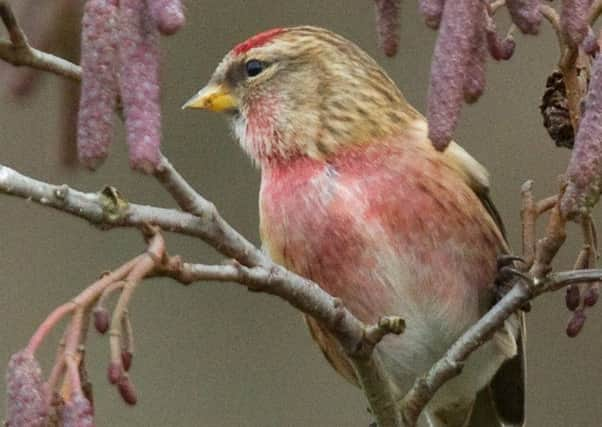Birdwatch: Species mystery cracked of bird that hangs upside down


In winter redpolls like to feed in alder trees, hanging upside down to tease the seeds out of the black cones. They also have a distinctive flight note, a hard rattling call.
Most British redpolls move south for the winter along with siskins and it is nice to see the pink and brown redpolls and green and yellow siskins as they feed together.
Advertisement
Hide AdAdvertisement
Hide AdLater in the winter, when food supplies in the countryside become exhausted, both visit garden bird feeders, particularly those where there are plentiful supplies of niger seeds.
Redpolls have long been a hot topic among bird taxonomists, the group that decides which birds should be classed as separate species.
At one stage the lesser redpoll, the smaller darker species that breeds in this country, was lumped in with the larger, paler redpoll found in Scandinavia and Russia and a frequent winter visitor here. Both were known as the common redpoll or just redpoll.
Then in 2001, a change of heart saw the British Ornithologists’ Union decide that the lesser redpoll should be a species in its own right.
Advertisement
Hide AdAdvertisement
Hide AdThere is also a third redpoll species recognised on the British List, the Arctic, known in the US as the Hoary redpoll because its ‘frosty’ appearance with white puffed out feathers resemble a little snowball.
The Arctic is in turn split by some into two races, Coues’s from Scandinavia and Siberia and Hornemann’s from Greenland and north east Canada.
But all the lengthy descriptions of different redpolls in bird books are about to become irrelevant. DNA research shows there’s no significant differences in the genome of lesser, common or Arctic redpolls and differences in size and appearance are, on their own, insufficient to qualify them as separate species.
Spotted around the region this week was a great northern diver was present inland this week on the Calder Wetland, Wakefield and three common scoters on Southfield Reservoir near Doncaster.
Advertisement
Hide AdAdvertisement
Hide AdA surf scoter, a visitor from Canada, was seen off Filey Brigg this week and there was also a report of a Pallas’s warbler in trees behind Deepdene. Red-throated divers and black-necked grebes were in Scarborough Harbour.
Caspian gulls have been seen, including three on roofs in the Attercliffe area of Sheffield and others at Angler’s Country Park and Wintersett reservoir near Wakefield and Rufforth near York.
A hawfinch was in the trees around St Hilda’s church, Ampleforth.
Waxwings were seen at Tree Sparrow Farm on the Old Moor reserve near Barnsley as well as bramblings and redpolls.
More than 30 goosanders have been seen at the Fairburn Ings reserve. Some paths are closed because of flooding but the visitor centre is open.